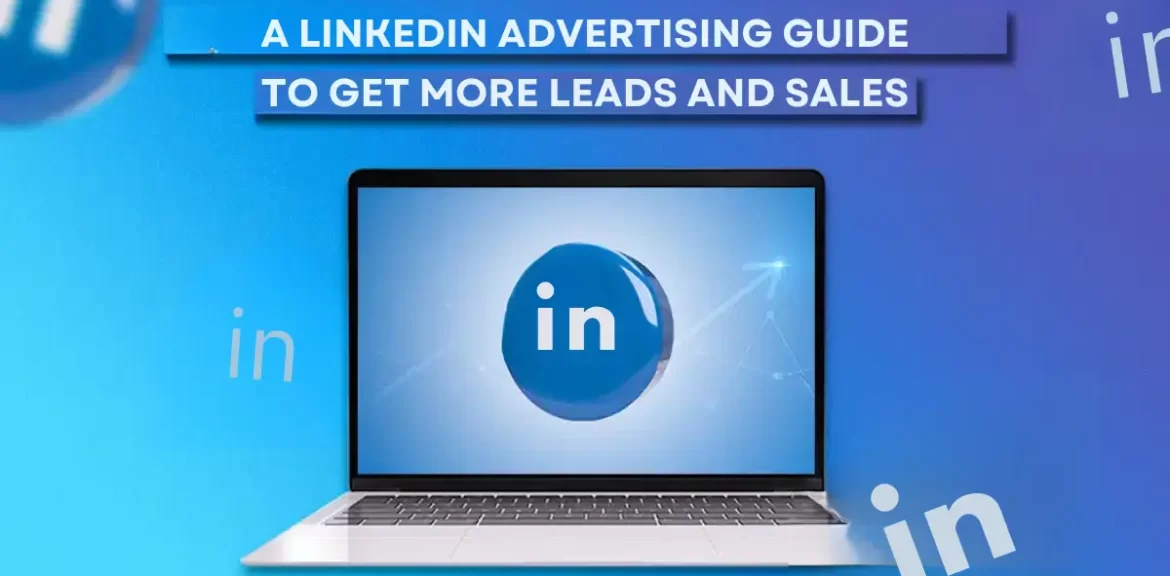LinkedIn is an incredibly effective platform for growing a B2B business’s recognition and revenue. According to data from the social company, audiences exposed to brand messaging on LinkedIn are 6X more likely to convert. However, lead creation on LinkedIn can feel difficult if you don’t have a clear plan in mind. In addition, marketing, to get some of his important insights. Moreover, for further advice on how to leverage LinkedIn for lead generation in the upcoming years and beyond. In this guide, discover a LinkedIn advertising Guide to get more leads and sales in 2024.
A LinkedIn Advertising Guide in just 6 steps
To review, lead generation is the collective term for all of the methods you use to draw in potential clients. Leads can be converted into paying customers. However, who uses your products and increases sales if they are developed into paying customers?
According to LinkedIn advertising guide, Professional decision-makers with purchasing power make up the majority of LinkedIn’s readership. As it enables you to speak directly to prospective clients who might end up becoming paying clients. This section will explain how to generate leads using LinkedIn.
1. Establish a strong LinkedIn Page for your company
It’s time to build a fantastic LinkedIn Page for your company. Once you’ve made sure that each of your leaders has a significant LinkedIn presence.
A free product called LinkedIn Pages might assist your business in increasing its online visibility. The thought leadership content for your brand, including videos, executive comments, and carefully collected data from other sources. Must be sure, it should also be housed on this crucial Page.
2. Join the LinkedIn groups that include your clients and customers
At its foundation, LinkedIn is a social platform just like any other. Similar to Facebook, users can form groups based on interests. Also, you should join these groups to interact with other professionals.
Share updates and articles to promote debates on pertinent subjects or simply promote your services. Your future clients can notice what you say and start to recognize you as a source of insightful information if you’ve joined groups carefully.
Groups are another tool you may use to understand your audience better. Listen to your active members to identify industry pain points and how they want these issues resolved.
3. To make sure your content reaches the people you want it to, use LinkedIn Ads and Sponsored Content
Small businesses with limited marketing resources can be hesitant to invest in LinkedIn paid ads. In light of LinkedIn’s position as the leading organic and sponsored channel for B2B companies, investing in the platform would make sense.
4. Ensure that your marketing and sales strategies are well-aligned
You’re probably all too aware of the recent change in consumer purchasing habits. Many customers conduct preliminary web research and use marketing materials before contacting a sales representative.
With more informed consumers, it is now crucial for marketers to address the demands of customers who are farther along the buyer’s journey before effortlessly transferring them to sales so that the latter is aware of the customer’s stage in the process. Utilizing sales reps’ expertise while developing marketing materials is essential because many of them are the only ones who have an intimate understanding of the target consumer.
All of this implies that you must unify your sales and marketing teams since they both contribute significantly to generating leads and completing deals, and they do so to a greater extent than ever before.
5. Utilize your connections with present clients and customers
The networking aspect of LinkedIn is its key selling point, so you should take advantage of it for lead creation. On LinkedIn, make relationships with your present clients and customers and find out about their industry connections because they can be important to you as well.
Ask for referrals, and references, or just find out how to get in touch with someone they know who fits your customer profile if you have connections with existing clients.
Additionally, you are employing warm outreach when you get in touch with fresh leads. As a result, you can quickly provide suggestions that are relevant to their interests and give them value right away because you already know a little bit about them.
Such solicitations are less intrusive, invasive, and salesy than cold contacting. However, someone discovered their phone number online because LinkedIn is a professional network.
6. Continually be present on the platform
LinkedIn requires consistency, just like all of your other social media platforms do. You are not establishing yourself as a consistent presence with your contact. In case you upload an article once a week and then log out.
Additionally, think about using LinkedIn Matched Audiences to retarget website visitors to make sure you’re hitting the proper audiences.
Final Thoughts!
We hope this LinkedIn Advertising guide was helpful for you to get complete knowledge on LinkedIn ads. In 2024, businesses will be able to reach their ideal target clients in a very effective by generating leads on LinkedIn.
Companies can benefit from this very effective type of networking by using pertinent content, strategic group interaction, and targeted campaigns created especially for the platform’s algorithm. Are you prepared to boost your lead generation on LinkedIn? Stay tuned with us.
FAQ’s
Sponsored Content, Single Image Ads, Video Ads, Carousel Ads, Event Ads: These ads, and Document Ads.
Reaching a highly engaged audience, Targeting your ads to specific audiences, and Improving your conversion rates.
Choose your objective, Select your targeting criteria, Choose your ad format, Set your budget and schedule, and Set up your ad creative.





